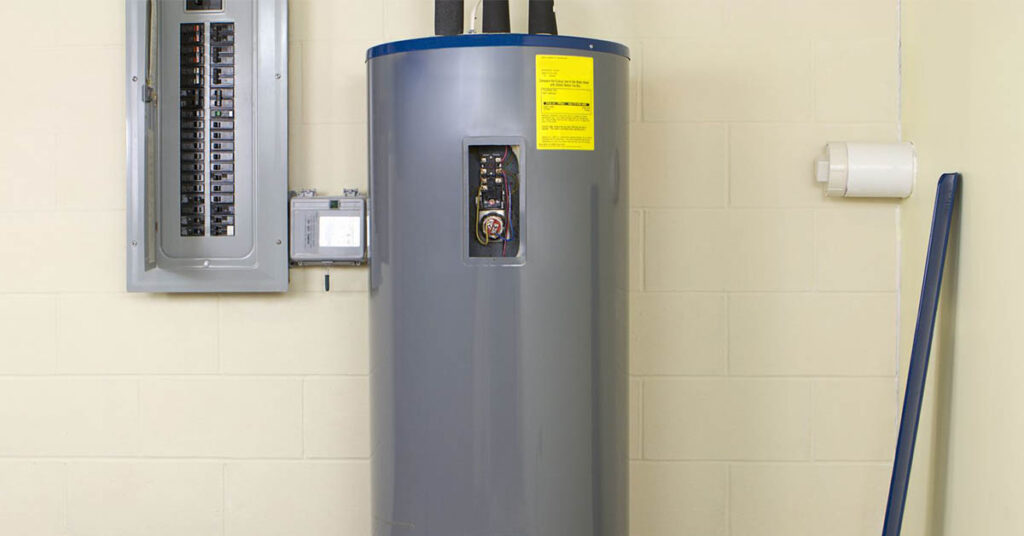As homeowners, we often overlook the maintenance needs of our appliances until they malfunction. However, one crucial yet frequently neglected task is draining the water heater. While it may seem like an unnecessary chore, regular water heater maintenance can prolong its lifespan, improve efficiency, and ensure the quality of your home’s hot water supply. In this article, we’ll delve into the reasons why should you drain your water heater and provide a step-by-step guide on how to do it effectively. Let’s get started.
Why Should You Drain Your Water Heater?
Ideally, you should drain your water heater at least once a year to remove sediment buildup and maintain optimal performance. However, the frequency may vary depending on factors such as water quality, usage patterns, and the type of water heater you have.
If you notice any signs of sediment buildup or reduced efficiency, such as discolored water, strange noises, or longer heating times, it’s advisable to drain your water heater immediately. Additionally, if you live in an area with hard water, you may need to drain your water heater more frequently to prevent mineral buildup.
Why Drain Your Water Heater?
Over time, sediment, minerals, and other debris accumulate at the bottom of your water heater tank. This sediment buildup not only reduces the efficiency of your water heater but also increases the risk of corrosion and rust, ultimately leading to premature failure. By draining your water heater periodically, you can remove this sediment and prevent potential issues.
Here are some key benefits of draining your water heater:
Improved Efficiency
Sediment buildup acts as an insulating barrier, making it harder for the heating element to transfer heat to the water. By flushing out the sediment, you can enhance the efficiency of your water heater and reduce energy consumption.
Extended Lifespan
Regular maintenance, including draining the water heater, can significantly prolong its lifespan. Removing sediment and preventing corrosion helps prevent costly repairs or premature replacements.
Better Water Quality
Sediment buildup not only affects the efficiency of your water heater but also compromises the quality of your hot water. Draining the tank removes sediment and other contaminants, ensuring cleaner and healthier hot water for your household.
Reduced Risk of Damage
Sediment accumulation can lead to various issues such as clogs, leaks, and even tank failure. By draining your water heater, you can minimize the risk of damage to your appliance and avoid costly repairs or replacements.
How to Drain Your Water Heater: A Step-by-Step Guide
Draining your water heater may seem like a daunting task, but with the right tools and guidance, it can be relatively straightforward. Here’s a step-by-step guide to help you through the process:
- Turn Off the Power: Before draining your water heater, ensure that the power source is turned off. For electric water heaters, switch off the circuit breaker, while for gas water heaters, turn off the gas supply.
- Allow the Water to Cool: Hot water can cause serious burns, so it’s essential to allow the water heater to cool down before draining. Turn off the cold water supply and wait for the water inside the tank to cool to a safe temperature.
- Locate the Drain Valve: The drain valve is typically located near the bottom of the water heater tank. Attach a garden hose to the drain valve and place the other end in a suitable drainage area, such as a floor drain or outdoor space.
- Open the Pressure Relief Valve: To allow air into the tank and facilitate drainage, open the pressure relief valve on the water heater.
- Open the Drain Valve: Using a wrench or pliers, slowly open the drain valve to release the water from the tank. Be cautious as the water may be hot and under pressure.
- Flush the Tank: Once the water has drained completely, you can flush the tank by briefly turning on the cold water supply. This will help remove any remaining sediment or debris from the tank.
- Close the Valves: Close the drain valve and pressure relief valve once the tank is empty. Remove the garden hose and ensure that all valves are tightly closed.
- Turn On the Power: Finally, turn on the power supply to your water heater. For electric heaters, switch on the circuit breaker, and for gas heaters, relight the pilot light and turn on the gas supply.
Read More: Is a Leaking Water Heater an Emergency?
Conclusion
Regular maintenance, including draining your water heater, is essential for ensuring its longevity, efficiency, and performance. By removing sediment buildup and preventing corrosion, you can prolong the lifespan of your water heater, improve water quality, and reduce the risk of damage or malfunction.
While draining your water heater may require some time and effort, the benefits far outweigh the inconvenience. Make it a part of your annual home maintenance routine, and enjoy reliable hot water for years to come.


